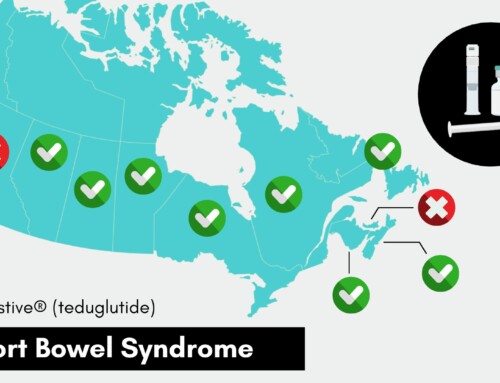
Patient-Focused Health Policy
We need change
There has been a lot of attention lately in the media about the Canada Health Transfer (CHT), which is the mechanism under the Canada Heath Act that ensures that the provinces and territories have sufficient funds to operate healthcare services in their jurisdiction. Healthcare in Canada, while seemingly free to the patient, is actually paid for by our tax dollars, so all of us should have a say in what that care looks like.
At the working meeting with premiers on February 7, 2023, Prime Minister Justin Trudeau announced that the federal government will increase health funding to provinces and territories by $196.1 billion over 10 years, including $46.2 billion in new funding. There are several elements and conditions associated with the funding, available in the news release.1 “Each province and territory is facing different challenges,” the Prime Minister said. “That’s why we’re focused on negotiating 13 distinct bilateral agreements that will respond to various situations across the country.”
This federal proposal falls short of what the premiers were asking for. While increasing the CHT is vital, it must be spent on healthcare, comply with the Canada Health Act, and the jurisdictions must improve healthcare data collection.
However, money is not the answer to everything. We need to re-create our healthcare systems, so they work for the end users – the patients.
Background
Canada’s healthcare system is losing its effectiveness and ability to respond to the needs of the population. The COVID-19 pandemic exposed many gaps, but healthcare was breaking long before. For example, in 2004 we were among many patient groups, government officials, healthcare professionals, and pharmaceutical companies looking at a national pharmaceutical strategy to ensure patients could get the medications they needed, but that project fell to the wayside. In 2016, patient groups were pushing the federal, provincial, and territorial governments to be allowed at the table for decisions that affect patients. We advocated for focus on universality, national scope, broad inclusivity, therapeutic options, timely access, and collaboration.2 We were waiting for access to medications that were available around the world but not in Canada.
Many years later, we are still facing the same issues. Individuals across the country are now waiting weeks, months, and even years to see a family doctor (if they even have a family doctor) or specialist (if there even is a specialist in their location). Once a person sees a specialist, they must wait months for tests and medically necessary treatments. A report by the Fraser Institute3 emphasized that wait times can, and do, have serious consequences such as increased pain, suffering, and mental anguish. In certain instances, they can also result in poorer medical outcomes – transforming potentially reversible illnesses or injuries into chronic, irreversible conditions, or even permanent disabilities. In many instances, patients may also have to forgo their wages while they wait for treatment, resulting in an economic cost to the individuals themselves and the economy in general. Hospitals and clinics are struggling to respond to increased demands for care, while supply chain issues impact the availability of medicines.4 Government regulations, guidelines, and policies are limiting access to lifesaving and life-enhancing therapies. There are significant labour shortages and burnout among healthcare professionals, who are leaving the sector in unprecedented numbers.5
As these challenges continue to build and strain our healthcare systems, patients are at risk of poorer quality of life, late-stage diagnoses, and worsening mental health. Unfortunately, some are dying while waiting for care in emergency rooms. Many have no choice but to continue living their day-to-day lives without medical information, diagnoses, and support, while others resort to paying out-of-pocket or travelling to other countries to access specialized care, treatments, and supplemental therapies.
We understand that payers and policymakers are grappling with difficult decisions on how to distribute limited funding and resources to best meet the needs of patients and healthcare systems. Despite increases in health spending year over year,6 current policies and strategies continue to be ineffective in addressing these challenges. Clearly, revolutionizing our approaches toward the complex, sometimes disconnected, healthcare systems is long overdue.
The Canada Health Act is Canada’s federal legislation ensuring publicly-funded access to doctors and hospitals. It sets out the primary objective of Canadian healthcare policy, which is “to protect, promote and restore the physical and mental wellbeing of residents of Canada and to facilitate reasonable access to health services without financial or other barriers.”
On April 1, 1984, the Act replaced several federal hospital and medical insurance acts and consolidated their principles by establishing criteria on public administration, comprehensiveness, universality, portability, and accessibility. Its aim is to ensure that all eligible residents of Canada have reasonable access to insured health services on a prepaid basis, without direct charges at the point of service.
Today, Canada has fewer drugs available for our population compared to Europe and the United States due to arduous regulations put in place after the Act came into force.7 Since 2016, the number of new medicines coming to Canada has decreased every year, with an average of 20 new medicines launched in Canada versus an average of 34 launched globally. This is a direct result of draconian measures put in place (and more are planned) by the Patented Medicine Prices Review Board (PMPRB), which severely limit innovative options for Canadians. Similar trends occurred in oncology therapies and orphan status medicines.
Quite simply, no Canadian should be left without the means to obtain medicines that a qualified healthcare professional has deemed necessary.
Social Determinants of Health in Canada8
Many factors have an influence on individual and population health. Our individual genetics, lifestyle, exposure to viruses and bacteria, and where we are born, grow, live, work, and age have an important influence on our health. Health Canada has identified broad-ranging social determinants of health. The main determinants are:
- income and social status
- employment and working conditions
- education and literacy
- childhood experiences
- physical environments
- social supports and coping skills
- healthy behaviours
- access to health services
- biologic and genetic endowment
- gender
- culture
- race and racism
What is high-quality healthcare policy?
High-quality healthcare policy focuses on promoting value for patients (and caregivers) throughout their care journey.9 It recognizes the uniqueness of individuals and strives for sustainable and integrated care. To ensure this, patients and groups who represent them are involved in collaborations and partnerships in the decision-making processes. It is vital to put the patient first in an open and sustained engagement to achieve the best experience and outcome respectfully, compassionately, and successfully. We need a relational model of care, rather than the transactional, disjointed schemes currently in place.
We must never lose sight of the absolute fact that the person is the object of the healthcare purpose. We must meet the needs of Canadians when they experience injury, infection, disease, genetic anomalies, age-specific illness, and in all aspects of health, including health promotion and prevention.
Aspects of a high-quality healthcare system:
Essential
- is a core Canadian expectation
- supports all other aspects of our lives
- is without cost at point of service
- includes the person at the centre of decision making
Quality
- delivers at a high standard
- is transportable across the country
- ensures the right treatment at the right time
- includes all diseases and disorders (e.g., mental health, cancer, obesity)
Relational
- recognizes and respects diversity and uniqueness, and adjusts to the person’s needs
- offers multiple choices
- tailors current therapeutic options for different patients
- integrates many therapies, professionals, and disciplines
Value
- provides value to patients and persons using the healthcare system (e.g., prioritizes achieving outcomes that matter most to the person, not the system, while keeping the system sustainable)
Compassionate
- is equitable and culturally safe
- offers connectivity for geographical, cultural, and social variances
- understands that there are reasons patients might not follow medical advice
- considers and connects people who need support with social determinants of health such as food security, housing, and financial support
- focuses on universality, portability, and accessibility10
- accepts patients without prejudice and stigma (e.g., medications for obesity, addiction)
- recognizes and includes the role of social supports including family, friends, and caregivers, as defined by the patient
High-quality healthcare policy provides:
Timely Access
- to primary care providers, specialists, mental health workers, and other healthcare professionals working in teams to optimize outcomes
- to affordable and effective diagnostic tools
- to a diagnosis
- to insured medications, therapies, and devices
- to successful management or resolution of the health issue
- to services for persons living with disabilities and communication barriers
- to social factors that contribute to good health (e.g., income, housing, quality food)
Accountability
- transparent and communicative
- public administration
- based on evidence from good quality, interoperable data that are collected, shared, and used across the country while respecting individuals’ rights over their own personal health data
- builds with a sustainable vision that keeps the patient at the centre of decision making
Sustainability
- appropriate funding models, policies, supports, and resources for healthcare professionals
- appropriately extends healthcare professionals’ scope of practice to support timely, accessible, high-quality delivery of care
Innovation
- embraces innovation (e.g., virtual care, digital health, artificial intelligence, treatment and medical devices innovation and breakthroughs)
- uses precision medicine for best use of funds and to avoid waste
- supports learning health systems that are continually improving
- has secure, connected, person-centred, and interoperable health data infrastructure
- is open to change, is flexible, and not steeped in tradition
Who does it benefit?
- patients, both individually and collectively, no matter where they live or their social circumstances
- caregivers
- healthcare providers
- advisors and decisionmakers
- other related areas of the policy landscape (g., research and development)
High-quality healthcare policy also works toward strengthening collaborations with other stakeholders, including medication and device developers, distributors, researchers, and professional associations. Individuals also have social and personal responsibilities in caring for their own health and wellbeing as best they reasonably can.
How does it make funding decisions for diagnostic and clinical interventions?
- Seeks patient input and collaboration in decision-making processes to ensure that outcomes address patient needs throughout their care trajectory
- implements a lifecycle approach11 and other innovative funding models to promote access to lifesaving new therapies (e.g., managed access agreements12)
- reinvests savings for more effective therapies that keep patients well and in remission
- integrates care among diverse providers and between provincial and territorial jurisdictions
- prioritizes long-term benefits in addition to short-term gains
- promotes sustainable and accessible use of medications for the patient (e.g., multi-drug therapy, take home cancer medications)
- works toward alignment in public formularies so that patients have access regardless of where they live or move to in Canada, and their ability to pay
- flexible restrictions for diagnostic criteria (e.g., remove fecal calprotectin testing fee for those without an existing IBD diagnosis) and treatment algorithms
- appropriate prescribing and deprescribing practices (e.g., preventing antimicrobial resistance)
- identifies cost savings by reducing duplication in administrative and review processes
- recognizes validity of, and implements, clinician recommendations, patient input, and real-world evidence (in the absence of and in addition to clinical trial data)
- flexible public listing agreements to allow healthcare providers to administer therapies for compassionate and exceptional use
- recognizes the range of evidence-based interventions used to treat various diseases and conditions (e.g., pharmacological, psychotherapy interventions, therapeutic devices)
What does high-quality healthcare policy measure?
- improvements to patient health outcomes, including patient reported outcomes, mental health, and quality of life (and variation in healthoutcomes by, for example, race and ethnicity)
- impact of all procedures and therapies included in a patient’s journey with a diagnosis
- alignment of care with patient preference
- short- and long-term healthcare resource utilization (e.g., hospitalization, emergency room visits, use of additional medications and supplementary therapies) across the care continuum
- considers the wellbeing of caregivers and their ability to support their loved ones
- maintains patient confidentiality in data collection























